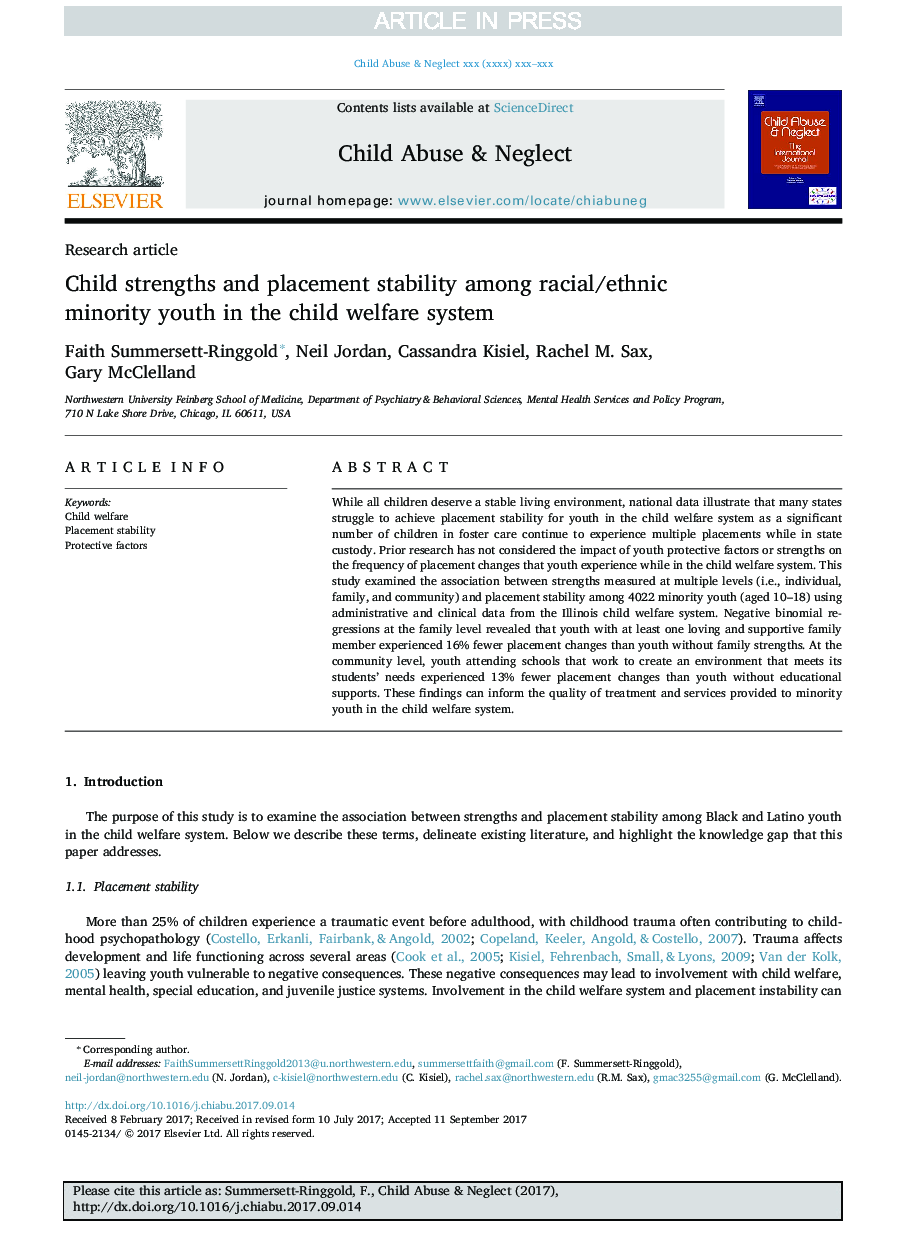| Article ID | Journal | Published Year | Pages | File Type |
|---|---|---|---|---|
| 6832207 | Child Abuse & Neglect | 2018 | 12 Pages |
Abstract
While all children deserve a stable living environment, national data illustrate that many states struggle to achieve placement stability for youth in the child welfare system as a significant number of children in foster care continue to experience multiple placements while in state custody. Prior research has not considered the impact of youth protective factors or strengths on the frequency of placement changes that youth experience while in the child welfare system. This study examined the association between strengths measured at multiple levels (i.e., individual, family, and community) and placement stability among 4022 minority youth (aged 10-18) using administrative and clinical data from the Illinois child welfare system. Negative binomial regressions at the family level revealed that youth with at least one loving and supportive family member experienced 16% fewer placement changes than youth without family strengths. At the community level, youth attending schools that work to create an environment that meets its students' needs experienced 13% fewer placement changes than youth without educational supports. These findings can inform the quality of treatment and services provided to minority youth in the child welfare system.
Related Topics
Health Sciences
Medicine and Dentistry
Perinatology, Pediatrics and Child Health
Authors
Faith Summersett-Ringgold, Neil Jordan, Cassandra Kisiel, Rachel M. Sax, Gary McClelland,
